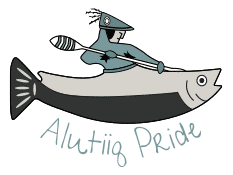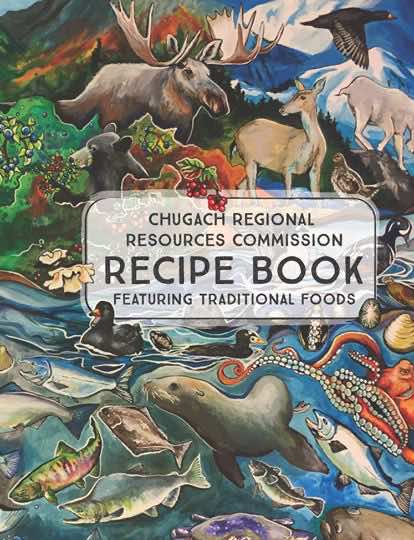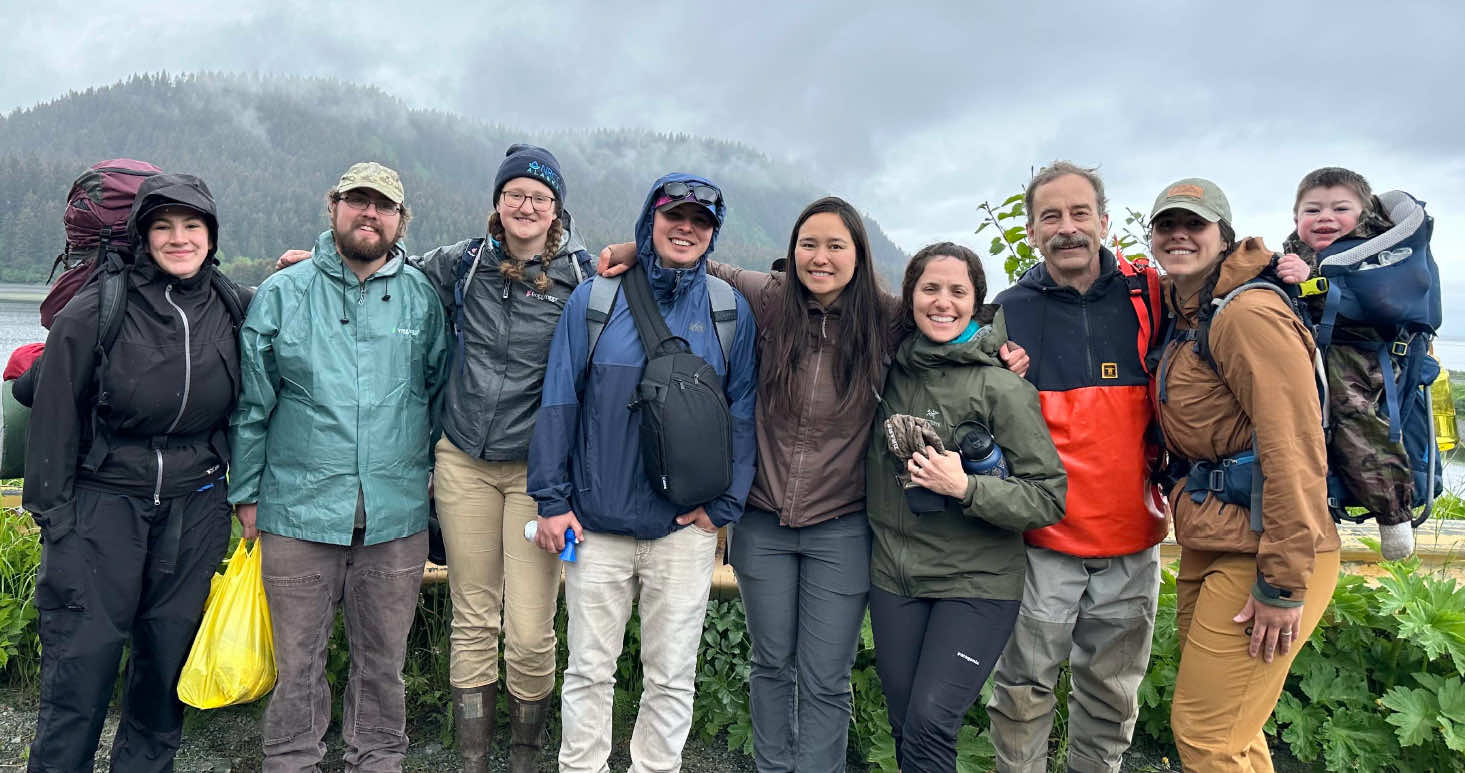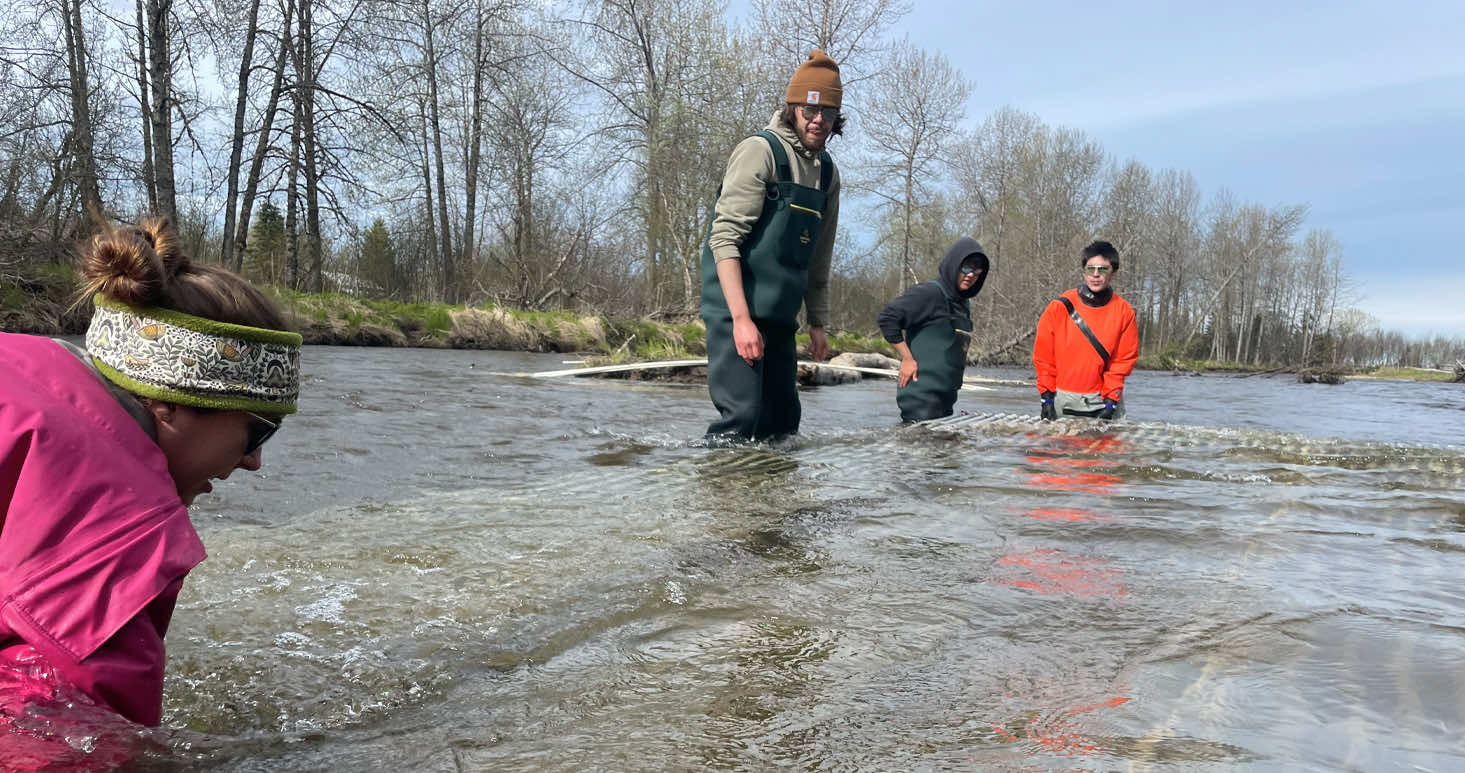CRRC 2021 Q3 Newsletter

Chugach Regional Resources Commission held a two-day virtual workshop over zoom March 24-25, 2021. Residents from around southcentral Alaska, including students from classes in Port Graham and Tyonek, came together to talk about hunting birds and gathering eggs, as well as the cultural connection people share with birds. Elders Anna Bateman (Valdez), Mark King (Cordova), Bob Heinrich (Cordova), and Larry Evanoff (Tatitlek) shared their memories and knowledge about migratory birds with the group. The online event also featured a live-bird demonstration from Bird TLC, a live-bird art class, a showing of the film The Duck In, and presentations on migratory bird co-management from the Alaska Migratory Bird Co-management Council, Alaska Department of Fish and Game, and the US Fish and Wildlife Service.
As a next step, CRRC will take the information from the workshop and use it to help develop a migratory bird ID Guide that hunters and egg gatherers can take out into the field with them. The guide will include art by Christalina Jager and Kim McNett, and will include the art of the stories and traditions people shared in the workshop. Check out a sneak peek of the art below.
Are you an avid bird hunter, egg gatherer, or bird watcher? CRRC would love to talk with you to learn more about traditions related to spring bird hunts and egg gathering to include that information in the field guide. You will receive an honorarium for sharing your time and knowledge. For more information, please contact Erin Shew at (907) 385-7670 or .
Chugach Alaska Corporation Internship Program
Allison Carl Graduated from UAA this spring with her Bachelor of Science in Biology. She finished the Chugach Alaska Corporation (CAC) Internship Program working as a Research Scientist Intern with CRRC. During her last semester, she assisted in research projects including resource vulnerability and assessment planning in relation to climate change in Prince William Sound and the Lower Cook Inlet. She also assisted in a project supporting the baseline monitoring of ocean conditions in the region with the Alutiiq Pride Marine Institute as a part of the Biomedical Learning and Student Training (BLaST) Program. Next up, Allison will enter the CAC Apprenticeship working as a Research Scientist in partnership with CRRC and continue to contribute to research efforts in the region.

On the first Wednesday of every month, CRRC hosts an Alaska Inter-Tribal Subsistence Cooperative Management Alliance meeting. CRRC staff monitors regulatory agencies ’ meeting cycles and proposals up for consideration to these boards concerning fish and wildlife in the region, helps create testimony for or against proposals or measures, consults experts or members of regulatory boards, and works with Member Tribes to address harvest concerns.
A crucial component of the CRRC staff’s work to support the Alliance is attending regulatory meetings that have the potential to impact hunting, fishing, and subsistence in the southcentral region. Regulatory meetings with agencies like the Board of Fish, Board of Game, Federal Subsistence Board, North Pacific Fisheries Management Councils, Regional Advisory Councils are scheduled in cycles, and it is important to diligently track them because a meeting may be the only time that specific board takes up a certain topic in a 3-year cycle.
CRRC staff worked with the Alaska Wildlife Alliance and Lucy Livesay to create the following videos showcasing the Board of Fish, Board of Game, and Federal Subsistence Board processes.
Chugach Regional Resources Commission (CRRC) received a grant from the Center for Disease Control to promote health and wellbeing in our communities. The COVID-19 pandemic is causing significant disruptions in availability of food in our communities, and as such, CRRC has been shifting the focus of our organization to assist communities dealing with the immediate impacts to food security from COVID-19. With generosity of the Alaska Native Tribal Health Consortium’s Traditional Food Guide for the Alaska Native People, CRRC has been able to include nutrition facts of cherished subsistence foods, when available. One thing is certain: without access to healthy foods, Tribal members, particularly for those at risk of, or suffering from food insecurity and those with pre-existing non-communicable diseases who are at a heightened risk of becoming severely ill with the COVID-19 Virus.
Traditional Foods Recipes
Chugach Regional Resources Commission produced a recipe book based on recipes from Tribal members in the Chugach region.
The recipe book can be purchased here: https://chugach-regional-resources-commission.square.site/product/recipe-book-featuring-traditional-foods/3?cp=true&sa=true&sbp=false&q=false
In an effort to enhance food security in the region, CRRC used CDC grants funds to remaster the recipe pages to include nutritional values provided by the ANTHC as well as translations in various dialects, when available, from the Chugachmiut Heritage Preservation.
CRRC’s mission is to provide natural resource management and economic development services for our member Tribes. The current global outbreak of COVID-19 has disrupted food systems in the Chugach region. Tribal member’s food environments are rapidly changing in both their external dimensions – food availability, prices, vendors- as well as personal dimensions – geographical access, affordability, convenience and desirability. Traditional food has implications beyond physical health; it also plays an important role in the formation of identity, in the development of community, economic and social institutions, and in the everyday lives of Alaska Native people and communities. Not only are certain foods central to the ceremonial and epistemological belief systems of many Tribes, but communities also face unique issues as they try to feed their people in a world of increasing prices and less access to healthy food.
Chugach Regional Resources Commission would like to thank the Chugachmiut Heritage Preservation for the traditional foods translations they provided for us to use to update CRRC’s recipe book. Mark Hiratsuka and the Master Speakers worked tirelessly on Chugachmiut’s Heritage Kits, which has a vision to revitalize the traditional Chugach Native culture and language. Some of the translations came from the Heritage Kit, “Food from the Sea”, while others came from the Heritage Kit, “Traditional Foods and Recipes”. For more recipes and translations, please visit the Chugachmiut Heritage Preservation website.
CRRC’s mission is to provide natural resource management and economic development services for our member Tribes. The current global outbreak of COVID-19 has disrupted food systems in the Chugach region. Tribal member’s food environments are rapidly changing in both their external dimensions – food availability, prices, vendors- as well as personal dimensions – geographical access, affordability, convenience and desirability. Traditional food has implications beyond physical health; it also plays an important role in the formation of identity, in the development of community, economic and social institutions, and in the everyday lives of Alaska Native people and communities. Not only are certain foods central to the ceremonial and epistemological belief systems of many Tribes, but communities also face unique issues as they try to feed their people in a world of increasing prices and less access to healthy food.
Chugach Regional Resources Commission would like to thank the Chugachmiut Heritage Preservation for the traditional foods translations they provided for us to use to update CRRC’s recipe book. Mark Hiratsuka and the Master Speakers worked tirelessly on Chugachmiut’s Heritage Kits, which has a vision to revitalize the traditional Chugach Native culture and language. Some of the translations came from the Heritage Kit, “Food from the Sea”, while others came from the Heritage Kit, “Traditional Foods and Recipes”. For more recipes and translations, please visit the Chugachmiut Heritage Preservation website.
Community Sampling for Ocean Acidification
in Southcentral Alaska Video
Chugach Regional Resources Commission was awarded through the 1st OA Information Exchange microgrants by Ocean Acidification Information Exchange and used the funds to create an educational video that can be used to help inform native Alaskan communities about the threat ocean acidification poses to local wild shellfish populations. The ocean acidification monitoring by APMI provides climate data for researchers to utilize in studying trends and high-level science.
This video features Natural Resource Specialists from Native Village of Port Graham and the Seldovia Village Tribe, who have been building their capacities for years to manage local environmental protection programs. Utilizing local residents to conduct the sampling is a cost-effective way to expand the spatial ocean acidification dataset coverage, build capacity in those communities and broaden the local knowledge for residents most affected by changing ocean conditions.
Community Sampling for Ocean Acidification
in Southcentral Alaska Video

APMI hosted an online and in-person sampler training the first week of May that was attended by most CRRC employees and several IGAP samplers. During this training, participants reviewed the harmful algal bloom program and purpose. Participants and staff were taught harmful algal bloom microscopy and an introduction to proper wet lab procedures and safety precautions. Later in the training, the group worked on data collection and entry by doing an overview inside then taking the procedures outside to practice on the docks. The training wrapped up with an open forum for questions and an ocean acidification refresher with hatchery staff.
Attendees learned to sample for and identify harmful algae under a microscope. HAB sampling began the following week, and HAB water sample data are being collected regionally by tribal members and collaborators through our CROM Program. Weekly reports are being generated on HAB prevalence across PWS and LCI and can be viewed in real time at www.alutiiqprideak.org.


Left: Esther Kennedy, Sitka Tribe of Alaska, teaching Native Village of Tatitlek resident, Ricky Kompkokff, how to read plankton through a microscope.
Right: Ricky Kompkoff (L) teaches Chugach Regional Resources Commission employee, Rachel Fischer (R), how to use the microscope to look at algal samples.
Harmful Algal Bloom Lab
The HAB Lab is currently in the final stages of set up at APMI. Our newest staff member, HAB Lab Technician Annette Jarosz arrived in Seward on June 1. Training on the plate reader to conduct shellfish ELISAs for detection of Domoic Acid and Saxitoxin occurred the first week of June with collaborators at UAF. We are awaiting arrival of ELISA kits to begin testing shellfish in the Seward area.
CRRC’s AFE Presentation
Chugach Regional Resources Commission’s Regional Environmental Coordinator, Chelsea Campbell, presented at the Alaska Forum on the Environments Technical Session on June 16, 2021.
With the uncertainties surrounding COVID-19 and priority to ensure the health and safety of all our attendees, the Alaska Forum on the Environment 2021 was offered as a virtual event through Alaska Connect, a new online training and events platform in partnership with Knik Tribe this year. Thanks to this partnership, technical sessions and environmental trainings will now be offered through Alaska Connect all year long.
Chelsea gave an update on the Chugach Regional Resources Commission and the Alutiiq Pride Marine Institute’s Water Quality Monitoring Program. This past year, the water quality monitoring program has seen immense growth through the addition of new samplers in CRRC’s Member Tribes as well as the expansion of harmful algal bloom sampling and shellfish toxin detection. Chelsea also showed attendees CRRC and APMI’s newest video, “Community Sampling for Ocean Acidification in South Central Alaska”. This video features Natural Resource Specialists from Native Village of Port Graham and the Seldovia Village Tribe, who have been building their capacities for years to manage local environmental protection programs. Utilizing local residents to conduct the sampling is a cost-effective way to expand the spatial ocean acidification dataset coverage, build capacity in those communities and broaden the local knowledge for residents most affected by changing ocean conditions.
The ocean acidification program, conducted by the APMI and CRRC, has been bridging the gap between western science and residents of coastal communities in Southcentral Alaska. The continuous ocean acidification monitoring by APMI and discrete ocean acidification samples and exposure studies provide climate data for researchers to utilize in studying trends and high-level science. The discrete ocean acidification sampling program is conducted by Natural Resource Specialists in Alaska Native communities in Southcentral Alaska.
Wetland Program Plan Grant
CRRC has been working on developing a Wetland Program Plan, funded by the EPA, and is nearing the completion of this effort. The wetland survey that was available digitally and in physical copies to each of CRRC’s Member Tribes has been officially closed and the randomized winners have been chosen to reward our participants for their input. With the survey closed, Staff are working on reviewing the survey data and answers and write the official Wetland Program Plan report. CRRC staff is working on digitizing some of the maps that were produced from the Watershed Analysis and Water Quality Evaluation that was done for Chenega, Tatitlek, Port Graham, and Nanwalek by contractors hired by Chugachmiut in 2002. While still a work in progress, CRRC would like to once again express gratitude to all the community members that participated in the survey!
CRRC’s Climate Change Program
Figure 1: From Predicting Future Potential Climate-Biomes for the Yukon, Northwest Territories, and Alaska (https://uaf-snap.org/wp-content/uploads/2020/06/Cliomes-FINAL.pdf). This model predicts Prince William Sound will remain a coastal rainforest, while the Kenai Peninsula will become warmer and dryer, potentially transforming from a boreal forest ecosystem to a grassland similar to the Northern Great Plains.
CRRC wants to learn more about how climate change is impacting your environment and wild foods. Climate change has the potential to cause significant changes to our environment, changes that could impact wild foods and subsistence activities. The image below shows one potential environmental future in southcentral Alaska based on research by the Scenarios Network for Alaska Planning (SNAP) group. This is only one of many potential scenarios, but shows how drastic some changes in our region could be as climate change becomes more pronounced.
Climate impacts different places in different ways. CRRC is working to understand how local resources are being impacted by climate change. By understanding this, we can develop plans to help mitigate those impacts. CRRC wants to talk to people who hunt, gather, put away, or otherwise use wild foods to understand what changes you’re seeing and how those changes are affecting you. CRRC will provide an honorarium for sharing your time and knowledge. Contact Erin Shew at (907) 385-7670 or for more information.
CRRC’s “Least Wanted” Invasive Species List
Growth
• Grows up to 30 feet tall
• Sprouts from its trunk, stems and roots when cut
• Is rounded in shape, has low branching crowns, and its multi-stemmed growth can form dense thickets
Bark
• Bark is relatively smooth and grey to brown
• Visible pores on the bark are called lenticels
Leaves
• Leaves are ovate, elliptical and thinning at the tip
• Leaves are dark green with 2 small glands at the base of them
• Edges of the leaves are sharply serrated
Flowers
• Flowers are white, small and very aromatic
• Flowers are arranged in drooping cylindrical clusters called racemes
• In Alaska, blooms are seen between late May and early June
Fruits
• Small, bitter black cherries ripen in late summer
• Birds eat the cherries and spread the seeds to new areas
• Trimming & cutting European Bird Cherry stimulates growth!
• Root suckers & fallen trees can create thickets of new trees
• Can create defense chemicals called cyanogenic glycosides
• In rare circumstances, these trees can cause cyanide poisoning of moose
Distribution:
• Native to Northern Europe and Asia
• The northernmost extent in Alaska is the south-side of the Brooks Range, north of the Arctic Circle
• In Alaska, it has been planted in residential landscapes, parks and at a few remote cabins
• It is rapidly invading riparian stream sides and natural forests in Anchorage and Fairbanks
• Takes over the understory of forests and forms thickets where native plants once grew


(Outside of Anchorage) 1-877-520-5211
(In Anchorage) 907-786-6315 www.alaskainvasives.org











